[Disclosure: Please assume all outbound links may in some cases provide site-sustaining revenue from ads or referrals (with never any extra costs to you). See footer for more details. Thank you]
There's No Place Like Home...For Hazardous Substances
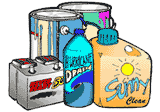
Hazardous Substances are in many of the products we use for housework, gardening, home improvement, and car maintenance. These hazardous substances endanger our health as well as pollute the environment. The average house has an estimated three to 10 gallons of hazardous substances and products.
Collectively, these materials can contaminate our drinking water if they are not stored carefully and disposed of properly. In addition to poisoning our water, inappropriate use and disposal of hazardous household substances and products can cause injuries, poisoning and air pollution.
What Makes A Household Product a Hazardous Substance?
Household products are
hazardous if they are:
Ignitable
- capable of burning or causing a fire
Corrosive
- capable of eating away materials and destroying living tissue when
contact occurs
Explosive and/or
Reactive - can cause an explosion or release poisonous fumes when
exposed to air, water or other chemicals
Toxic -
poisonous, either immediately (acutely toxic) or over a long period of
time (chronically toxic)
Radioactive
- can damage and destroy cells and chromosomal material (known to cause
cancer, mutations and fetal harm)
How Do You Know If A Product is Hazardous?
The Federal Hazardous
Substances Act of 1960 established labeling requirements for consumer products
containing hazardous substances. If a product has a hazardous substance, the
front label must include a warning and a description of the hazard.
Levels of hazards are
identified this way:
DANGER -
substances which are ex-tremely flammable, corrosive or highly toxic.
POISON -
substances which are highly toxic.
WARNING,
or CAUTION -
substances which are moderately or slightly toxic.
A statement telling you how
to avoid the hazard must appear with safe use instructions. Examples might be KEEP
OUT OF REACH OF CHILDREN or USE IN A WELL-VENTILATED AREA.
As a consumer you should
make it a habit to read hazardous product labels. These labels must include
the following information:
Brand Name
Common and/or Chemical
Name (Example: sodium hypochlorite or bleach)
Amount of Contents
(example: 16 oz.)
Signal Word - Danger,
Poison, Warning or Caution
Instructions for Safe
Handling and Use (example: recommended amount to use)
Name and Address of
Manufacturer, Distributor, Packer or Seller
Description of Hazard
and Precautions (example: Irritant to skin and eyes, harmful if swallowed)
First Aid Instructions,
when necessary or appropriate (example: If swallowed, feed milk).
Pesticides Are Different
Regulations concerning
pesticides are different. On pesticides, the word "warning" means
that the product is moderately toxic. This means that one teaspoon to one
ounce can kill an average adult. The word "caution" means that the
product is slightly toxic. It would take over one ounce to kill an average
adult.
Label information is
directed at "acute" or immediate effects only. You are not given
information about "chronic" or long-term hazards of chemical
products, such as cancer or birth defects.
There are other concerns
about labels, as well. Some products contain ingredients that have not been of
officially recognized by the federal government as hazardous but still are
cause for concern. "Inert" ingredients are chemicals added as
"carriers" for the active ingredients in cleaners and pesticides.
Only the percentage of inert ingredients are required on the label, not their
identity. Some inert ingredients are hazardous.
There is no standardized
list of chemical names. Many chemicals have numerous trade and/or scientific
names. This makes it hard for you to compare products. Antidotes listed on the
label may be incomplete, out-of-date, or even dangerously wrong. According to
a 1984 report by the National Academy of Sciences, less than 2 percent of all
new and existing chemicals have been tested sufficiently to allow a complete
health hazard assessment.
Also, many labels do not
tell you how to dispose of a product safely.
The use of the term
"non-toxic" is for advertising only. It has no regulatory definition
by the federal government.
It is very important that
you know as much as possible about products before you use them so that you
can adequately protect yourself. If a product label does not provide
ingredients or adequate instructions on safe use, look for another product
that has a more complete label.
Most hazardous household
products can be grouped into four major categories:
Automotive products
which are hazardous include motor oil, brake and transmission fluid,
antifreeze and car batteries, gasoline, kerosene, diesel fuel, and car wax
with solvent.
Household cleaners
include drain cleaners, oven clean- ers, toilet cleaners, spot removers,
silver polishes, furniture polishes, cleansers and powdered cleaners,
window cleaners, bleach, liquid cleaners, dyes.
Paints and solvents
include latex, oil-based, auto and model paint, paint stripper, primer,
rust remover, turpentine, varnish, wood preservative, mineral spirits,
glues.
Pesticides. (For more
information on pesticides, see How to Choose and Use Household
Insecticides, AG-392, by R.C. Hillmann.)
Other hazardous products
include: aerosol products, dry cell and disc or button batteries, hearing aid
batteries, moth balls and flakes, shoe polish, photographic chemicals, smoke
detectors and air fresheners and deodorizers.
Let's take a closer look at indoor air pollution sources, their
hazardous ingredients, and how they effect people.
Indoor pollution sources that release gases or particles into the air are the primary cause of indoor air quality problems in homes. Inadequate ventilation can increase indoor pollutant levels by not bringing in enough outdoor air to dilute emissions from indoor sources and by not carrying indoor air pollutants out of the home. Today's homes are particularly air tight due to greater energy efficient construction standards, thus lack of ventilation in modern homes is a major contributor to increased indoor air pollution. High temperature and humidity levels within homes can also increase concentrations of some indoor air pollutants such as mold spores, bacteria, and viruses.
Pollutant Sources
There are many sources of indoor air pollution in any home. These include combustion sources such as oil, gas, kerosene, coal, wood, and tobacco products; building materials and furnishings as diverse as deteriorated, asbestos-containing insulation, wet or damp carpet, and cabinetry or furniture made of certain pressed wood products; products for household cleaning and maintenance, personal care, or hobbies; central heating and cooling systems and humidification devices; and outdoor sources such as radon, pesticides, and outdoor air pollution.
The relative importance of any single source depends on how much of a given pollutant it emits and how hazardous those emissions are. In some cases, factors such as how old the source is and whether it is properly maintained are significant. For example, an improperly adjusted gas stove can emit significantly more carbon monoxide than one that is properly adjusted.
Some sources, such as building materials, furnishings, and household products like air fresheners, release pollutants more or less continuously. Other sources, related to activities carried out in the home, release pollutants intermittently. These include smoking, the use of unvented or malfunctioning stoves, furnaces, or space heaters, the use of solvents in cleaning and hobby activities, the use of paint strippers in redecorating activities, and the use of cleaning products and pesticides in housekeeping. High pollutant concentrations can remain in the air for long periods after some of these activities.
Here are some specific examples of common household products / chemicals, their potentially hazardous ingredients, and the potential health effects that may result:
Air fresheners and Deodorizers
Antifreeze
Bleach
Car Wax, Polish
Disinfectants
Drain Cleaner
Flea Powder
Floor Cleaner / Wax
Furniture Polish
Oven Cleaner
Paint Thinner
BEWARE of Household Solvents: Paint Stripper, Furniture stripper, Turpentine, Charcoal lighter fluid, Drycleaning fluids, Paint thinner, Nail polish remover, Degreasers, Lubricating Oils, and Fuels are generally 100% organic solvent!
Paints
Motor Oil / Gasoline
Spot Removers
Toilet Bowl Cleaner
Window Cleaners
Wood Stain / Varnish
Search our Extensive Household Chemical Encyclopedia which has chapters on over 100 Hazardous Substances commonly found throughout your home.
Hazardous substances may
enter your body in three ways ingestion, inhalation and absorption through the
skin.
Toxins can be ingested by
eating or drinking hazardous substances or contaminated food and water.
Ingestion is a major cause of poisoning in children 6 and under. Keep the
hazardous products out of the reach of children and in a locked area.
When you are working with
hazardous products, avoid putting anything in your mouth. Don't eat, don't
smoke, don't drink, don't even place things that enter your mouth in the work
area. When you're finished remove any contaminated clothing and wash your
hands (and other exposed body parts) with soap and water. Then you can put
something in your mouth.
Toxins can be inhaled.
Gases, vapors, and sprays pass directly through the lungs and enter the blood.
That is why good ventilation is essential. When you are working inside, use a
fan to direct air away from the work area to open windows. Air conditioners do
not provide sufficient ventilation since they recirculate air, even when set
on "vent." Thus they do not remove contaminants. If you can smell a
toxic chemical, your ventilation is not sufficient (although some harmful
chemicals have no odor). Use a mask or respirator to protect yourself.
Toxins can be absorbed
through the skin. Hazardous products containing irritants or corrosives will
injure the skin and then are absorbed. Some hazardous chemical can be absorbed
without causing any damage to the skin. Wear gloves and/or protective
clothing. Your eyes also are vulnerable to injury. Many hazardous products can
cause eye damage if splashed into the eye. Oven cleaners, drain cleaners, and
paint thinners are just three examples.
Wear goggles when working
with these products. Regular eyeglasses do not provide enough protection. Do
not wear contact lenses (especially soft lenses) when working with hazardous
products. The lenses absorb the vapors and then hold the irritant against your
eye. Safety goggles are inexpensive and can be purchased at hardware,
automotive supply and farm equipment stores.
Select the right product
. . .
When you go shopping for
products, your selection can be your first step toward minimizing danger.
Follow these guidelines:
Read the label. Make
sure you want the product. Are the ingredients safe to use in and around
your home?
Make sure the product
will do the job you need to have done.
Buy the least hazardous
product for the job. Let the signal words (Poison, Danger, Warning,
Caution) be your guide.
Check the label to see
if a product has several uses. Then you can avoid buying a different
product for each job.
Avoid aerosol products.
Aerosol products may contain hazardous or toxic propellants, and the fine
mist that they produce may be more easily inhaled. Pressurized cans cause
problems or explode when they are crushed, punctured or burned.
Make sure you know how
to properly dispose of the container.
Remember, the word
"non-toxic" is for advertising only. It does not mean the
product meets any federal regulations for non-toxicity.
Use it safely . . .
It may be impossible to
totally eliminate hazardous products in your home. The following guidelines
will help you when using hazardous substances and products to keep your home and environment
safe.
Read the directions on
the label and follow them. Twice as much doesn't mean twice the results.
Use the product only
for the tasks listed on the label.
Wear protective
equipment recommended by the manufacturer.
Handle the product
carefully to avoid spills and splashing. Close the lid as soon as the
product is used. This will control vapors and reduce chances of spills.
Secure lids tightly.
Use products in
well-ventilated areas to avoid inhaling fumes. Work outdoors if possible.
When working indoors, open windows. Use a fan to circulate the air toward
the outside. Take plenty of fresh-air breaks. If you feel dizzy, headachy
or nauseous take a break and go outside.
Do not eat, drink or
smoke while using hazardous substances and products. Traces of hazardous chemicals can be
carried from hand to mouth. Smoking can start a fire if the product is
flammable.
Do not mix products
unless directions indicate that you can safely do so. This can cause
explosive or poisonous chemical reactions. Even different brands of the
same product may contain incompatible ingredients.
Use it all up.
If pregnant, avoid
toxic chemical exposure as much as possible. Many toxic products have not
been tested for their effect on unborn infants.
Avoid wearing soft
contact lenses when working with solvents and pesticides. They can absorb
vapors and hold the chemical near your eyes.
Carefully and tightly
seal products when you have finished. Escaping fumes can be harmful and
spills can occur.
Most important of all:
Use common sense.
Store it safely in your
home . . .
Follow label directions
for proper storage conditions.
Leave the product in
its original container with original label attached.
Never store hazardous
products in food or beverage containers.
Make sure lids and caps
are tightly sealed.
Store hazardous
products on high shelves or in locked cabinets out of reach of children
and animals.
Store incompatibles
separately Keep flammables away from corrosives.
Store volatile products—those
that warn of vapors and fumes in a well-ventilated area, out of reach of
children and pets.
Keep containers dry to
prevent corrosion.
Store rags used with
flammable products (furniture stripper, paint remover, etc.) in a sealed
marked container.
Keep flammable products
away from heat, sparks or sources of anything that could ignite them.
Know where flammable
materials in your home are located and know how to extinguish them.
An astounding array of
hazardous products can be found in and around our homes. They are in common,
everyday household products as well as in pesticides. While we cannot
eliminate all contact with toxic materials we can minimize the contact.
Make informed decisions
about the selection, use and storage of hazardous products.
Remember hazardous
products may be: flammable, explosive/reactive, corrosive/caustic,
toxic/poisonous or reactive.
Learn to read the
labels. Look for the signal words. POISON means highly toxic. DANGER means
extremely flammable or corrosive or highly toxic. WARNING or CAUTION means
less toxic.
Lastly, use common
sense when using and storing hazardous products to decrease the potential
health hazards and pollution.
Handling
Wastes: Household by Shirley Niemeyer,
Extension Specialist, Home Environment Household waste such as
fluorescent lighting with PCB ballasts or mercury may need special handling
practices to handle them responsibly. The Federal Government does not specify
the method for consumer disposal of household lighting ballasts (except if the
ballasts are leaking PCBs). The Environmental Protection Agency (EPA) does
encourage environmentally responsible disposal or recycling of lighting wastes.
Because of PCBs
(polychlorinated biphenyls) toxicity, persistence and potential ecological
damage via water pollution, manufacture of PCB was discontinued in the U.S. in
the late 1970s.
Most older fluorescent
light ballasts have small capacitors that contain high concentrations of PCBs
(polychlorinated biphenyls). Disposal of pre-1979 light ballasts requires some
knowledge of ballasts. Nearly all ballasts manufactured before 1979 contain
PCBs. All ballasts manufactured after July 1, 1978 that do not contain PCBs
are required to be clearly marked "No PCBs". Look for the "No
PCBs" label and check the date stamp to see if the ballast was made after
1979. Unmarked ballasts or ballasts without a date code should assumed to be
PCB ballasts.
PCBs are toxic chemicals
according to U.S. EPA. While there is only a small amount, about one ounce, of
PCBs in each light ballast capacitor, there is a large number of ballasts in
the U.S. About half of the one billion ballasts, estimated as currently
installed, were manufactured before 1979 and usually contain PCBs.
The primary purpose of the
PCB regulations is to get PCBs permanently out of the environment. Regulations
(Toxic Substances Control Act) about disposal of PCB ballasts indicate that it
is permissible to dispose of non-leaking ballasts in a permitted
landfill. Under this Act, lighting ballasts containing a Small PCB Capacitor
are unregulated for disposal unless the Small Capacitor or ballast is leaking
PCBs. Even though it is legal in most areas to dispose of residential ballasts
in a permitted landfill, the EPA encourages disposers of large quantities of
PCB ballasts to treat them as if they were a regulated PCB waste. The intent
of the Small Capacitor disposal rule was to allow random disposal in landfills
by householders and other infrequent disposers. For larger quantities of Small
PCB Capacitors used by commercial and industrial sectors, the EPA encourages
voluntary collection and disposal of Small PCB Capacitors in chemical waste
landfills, ballast decap recycling processing, or high-temperature
incinerators.
The Superfund Law (CERCLA)
prohibits the disposal of more than one pound of PCBs (12-16 or more ballasts)
in a 24-hour period in a permitted sanitary landfill.
Thirteen states ban PCB
ballasts from permitted landfills, and another 17 states have special policies
or requirements regarding disposal of PCB ballasts.
Contact your area's
permitted sanitary landfill for information regarding regulations on PCB
ballast disposal and additional information. Although very few ballasts leak,
those that are leaking can usually be identified. Try to determine if a
ballast is leaking before removing it from the fixture. Most PCB leaks are
visible. If you see clear or yellow oil on the surface of a ballast, you
probably have a leaking ballast. Wear chemically resistant gloves when
handling the ballast and don't throw used ballasts around as leaks could
result. Place the ballast in a heavy plastic bag. Technically, if PCB ballasts
are leaking, they must be disposed of as regulated hazardous waste (TSCA).
Fluorescent lightbulbs are
usually more energy efficient and have a longer use life than incandescent
lightbulbs. However, there are some environmental issues to consider in use
and disposal of light bulbs.
EPA has tested fluorescent
lightbulbs based on the new Toxicity Characteristic Leaching Procedure. In
this testing, about 50 percent of the fluorescent lightbulbs tested as a
hazardous waste. The mercury used in the lightbulbs represents a small part of
the total mercury potentially entering the environment. According to the
National Electrical Manufacturers Association, the fluorescent lightbulbs
account for about 0.2 % (or about 34 tons) of the total mercury releases.
About 700 million mercury-containing lamps are purchased each year (1994). New
procedures for handling fluorescent lightbulbs are being developed, and
interest in recycling has increased.
The National Electrical
Manufacturers Association recommends that fluorescent lightbulbs not be put
into a solid waste incinerator. Manufacturers are working to reduce the
mercury content of fluorescent lightbulbs to the lowest feasible level.
However, lightbulbs containing mercury have a high energy efficiency, and
mercury free lightbulbs are not technically feasible at this time. The mercury levels affect the lightbulb's life--generally the higher the mercury per lamp,
the longer the life.
Firms that do recycle the
fluorescent lightbulbs may separate out mercury and the phosphor powder, the
glass, metal, and other materials. About 99 percent of the mercury is
recovered. To locate firms that recycle fluorescent lights, contact the
Nebraska Department of Environmental Quality at (402) 471-4210. If fluorescent
lightbulbs must be stored for recycling, store them in their cardboard tubes
and in boxes protected from damage. When a fluorescent lamp is broken, the
mercury can evaporate at room temperature. (There are no known health hazards
from exposure to lamps that are intact.)
Spent lightbulbs may be
hazardous waste and should be handled appropriately. Industry goals for
management include environmentally responsible management of the spent
lightbulb, reduced mercury content to the lowest feasible level, development
of an infrastructure to manage disposal recommendations, and careful
evaluation of reclamation technologies. The National Electrical Manufacturers
Association suggest that disposal of spent lightbulbs from consumer sources in
modern, quality permitted landfills appears to be a responsible short term
management option until other options are studied or become more readily
available. Some states (CA,MN,WI and FL) have banned mercury-contained lamps
from their landfills. In some European countries such as Sweden, Denmark,
Finland, Norway, Germany, The Netherlands, Switzerland, and Austria collection
and recycling is either recommended or legislated.
Recommendations for
disposal of fluorescent lamps and ballasts may change in the future. Search
out new information.
National Electric Manufacturers Association
the seventh national
USEPA conference on household hazardous waste management.
pp 176-180.
seventh national USEPA
conference on household hazardous waste management
p 181.
What Don't the
Labels Tell?
Types of Hazardous
Household Products
Indoor Air Quality in Your Home:
What Causes Indoor Air Problems?
Formaldehyde - Toxic; carcinogen; irritant to eyes, nose, throat and skin; may cause nausea, headaches, nose bleeds, dizziness, memory loss, and shortness of breath
Ethylene glycol - Very toxic; 3 ounces can be fatal to adult; damage to cardiovascular system, blood, skin and kidneys
Methanol - Moderately toxic; ingestion may cause coma or respiratory damage
Sodium hypochlorite - Corrosive; irritates or burns skin, eyes, respiratory tract; may cause pulmonary edema or vomiting and coma if ingested; contact with other chemicals may cause chlorine fumes
Petroleum distillates - Associated with skin and lung cancer; irritant to skin, eyes, nose, lungs; entry into lungs may cause fatal pulmonary edema
Sodium hypochlorite - Corrosive; irritates or burns skin, eyes; may cause pulmonary edema or vomiting and coma if ingested
Phenols - Flammable; very toxic; respiratory, circulatory or cardiac damage
Ammonia Vapor - irritating to eyes, respiratory tract and skin; possible chronic irritation
Sodium or potassium hydroxide (Lye) - Caustic; irritant; inhibits reflexes; burns to skin, poisonous if swallowed due to severe tissue damage
Hydrochloric acid - Corrosive, irritant; damage to kidney, liver and digestive system
Trichloromethane - Irritant to nose and eyes; central nervous system depression, liver and kidney damage if ingested
Carbaryl - Very toxic; interferes with human nervous system; may cause skin, respiratory system, cardiovascular system damage
Dichlorophene - Skin irritation; may damage liver, kidney, spleen and central nervous system
Chlordane and other chlorinated hydrocarbons - Very slow biodegradation; accumulates in food chain; may damage eyes, lungs, liver, kidneys and skin
Diethylene Glycol - Toxic, causes central nervous system depression and kidney, liver lesions
Petroleum Solvents - Highly flammable; associated with skin and lung cancer, irritant to skin, eyes, nose, throat, lungs
Ammonia Vapor - irritation to eyes, respiratory tract and skin; possible chronic irritation
Petroleum distillates or Mineral spirits - Highly flammable, moderately toxic, associated with skin and lung cancer, irritant to skin, eyes, nose, throat, lungs, entry into lungs may cause pulmonary edema
Sodium or potassium hydroxide (Lye) - Caustic; irritant, inhibits reflexes; burns to skin, eyes; poisonous if swallowed due to severe tissue damage
Chlorinated aliphatic hydrocarbons - Slow decomposition; liver and kidney damage
Esters - Toxicity varies with specific chemical; causes eye, nose and throat irritation and anesthesia
Alcohols - Volatile and flammable; eye, nose and throat irritation
Chlorinated aromatic hydrocarbons - Flammable; toxicity varies with specific chemical; may cause respiratory ailments
Ketones - Flammable; skin irritant; benzene is a carcinogen; possible liver and kidney damage
Aromatic hydrocarbon thinners - Flammable; skin irritant; benzene is a carcinogen; possible liver and kidney damage
Mineral spirits - Highly flammable; skin, eye, nose, throat, lung irritant; very high air concentrations may cause unconsciousness, death
Petroleum hydrocarbons (benzene) - Highly flammable; associated with skin and lung cancer; irritant to skin, eyes, nose, throat, lungs; pulmonary edema; benzene is a carcinogen
Lead - Damage to digestive, genitourinary, neuro-muscular and central nervous system; anemia and brain damage
Perchlorethylene or trichloromethane - Slow decomposition; liver and kidney damage; perchlorethylene is a suspected carcinogen
Ammonium hydroxide - Corrosive; vapor extremely irritable to skin, eyes and respiratory passages; ingestion causes tissue burns
Sodium hypochlorite - Corrosive, irritates skin, eyes, respiratory tract; may cause pulmonary edema and skin burns
Sodium acid sulfate, oxalate or hypochloric acid - Corrosive; burns from skin contact or inhalation; ingestion may be fatal
Chlorinated phenols - Flammable; very toxic; respiratory, circulatory or cardiac damage
Diethylene glycol - Toxic; causes central nervous system depression and degenerative lesions in liver and kidneys
Ammonia Vapor - irritating to eyes; respiratory tract and skin; possible chronic irritation
Mineral spirits, gasoline - Highly flammable; associated with skin and lung cancer; irritant to skin, eyes, nose, throat, lungs; entry into lungs may cause fatal pulmonary edema
Benzene - Flammable; carcinogen; accurnulates in fat, bone narrow, liver tissues
Lead - Damage to digestive genitourinary, neuro-muscular and central nervous system; anemia and brain damage
We've made it easy for you to find answers to the following important questions:
Exposure to
Hazardous Products
Selection, Use and
Storage Of Hazardous Household Products
In Summary
Fluorescent Lighting and PCB Ballasts
Wayne Woldt, Extension Specialist, Waste Management
PCB Ballasts
Identifying Ballasts
Containing PCB
Regulations
Handling
Mercury in Fluorescent Lamps
Resource
2101 L St NW
Washington DC 20037
References
University of Nebraska Cooperative Extension
Acknowledgments:
- Kelly Danielson, David Wisch and Teri
Swarts, Nebraska Department of Environmental Quality.
- Thomas Kimmel, DYNEX Environmental,
Inc. Market Development Manager
- Ginger Stewart, Nebraska State
Recycling Association
- Harry F. Dingman, PE, Nebraska Department of Environmental Quality
Our Household Hazardous Waste References and Resources Page lists many more sources of information about:
|
|
Additional Hazardous Substance Resources by the Home Air Purifier Expert
Here are some of our other information packed guides we recommend you explore in your search for information about Hazardous Substances:

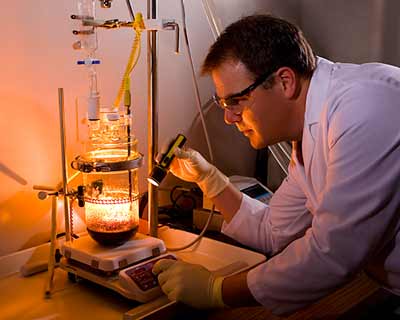

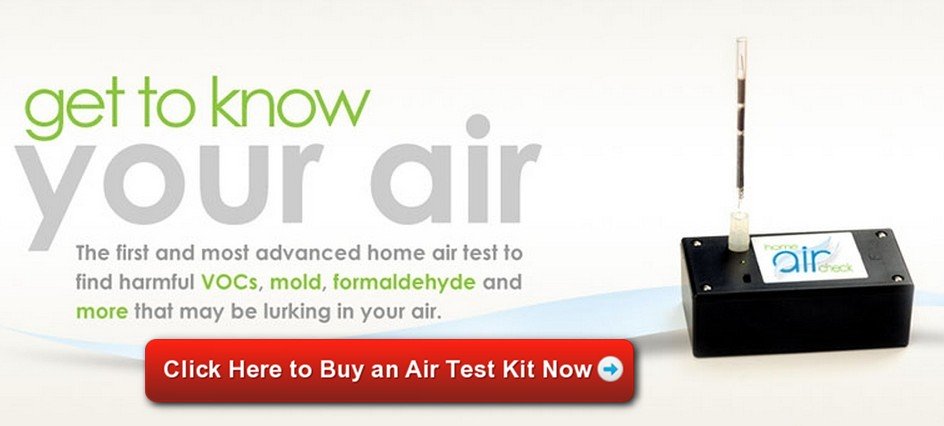
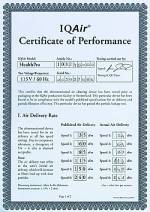
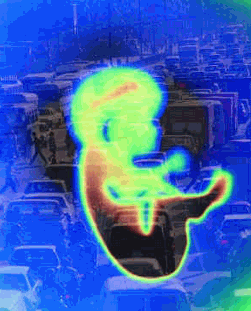
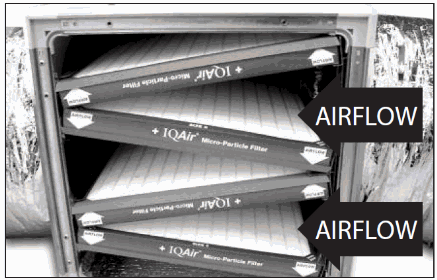
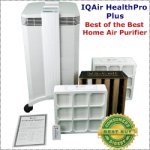
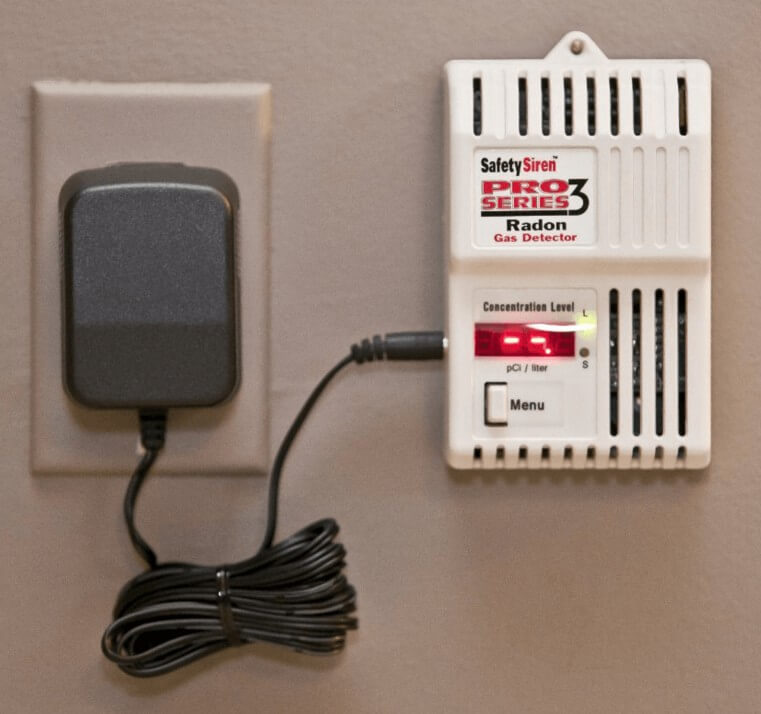




New! Comments
Have your say about what you just read! Leave me a comment in the box below.